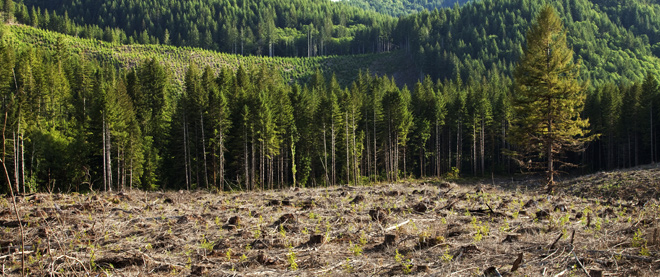Earlier this month, Macleans looked at the idea of “aerial reforestation,” or the large-scale dropping of tree seedlings using decommissioned military aircraft. Of course, we looked at this same plan many, many years ago—and it turns out the same guy is behind this latest round of journalistic interest.
 [Image: Courtesy of Getty Images/Macleans].
[Image: Courtesy of Getty Images/Macleans].
Moshe Alamaro, still affiliated with MIT, had previously been pushing his plan for “using a small fertilizing plane to drop saplings in plastic pods one at a time from a hopper,” Macleans explains. The biodegradable canisters would then have “hit the ground at 200 m.p.h.,” MIT explained back in 1997, “and imbed themselves in the soil. Then the canisters decompose and the young trees take root. A large aircraft could drop as many as 100,000 saplings in a single flight: Alamaro’s system could plant as many as a million trees in one day.”
But, Macleans points out, “it wasn’t very fruitful—most pods hit debris during pilot tests and failed to actually take root.”
The idea has thus now been “upgraded,” using different technical means “to create new forests on empty landscapes.”
The process Alamaro advocates places trees in metal pods that rot on contact with the ground, instead of the low-tech and less sturdy plastic version. He says the process can be adapted to plant shrubs, and would work best in places with clear, loose soil, such as sub-desert parts of the Middle East, or newly habitable Arctic tundra opened up by global warming. “What is needed is government policy to use old military aircraft,” he says, adding that thousands are in hangars across the globe. Although the original pitch failed, Alamaro says the growing carbon market is creating new interest, and he hopes to find funding for a large-scale pilot project soon. Once Alamaro gets planes in the air, the last step, says [Dennis Bendickson, professor of forestry], will be to simply “get people out of the way.”
In this context, it’s difficult to resist pointing out Iceland’s own soil-bombing campaign: “Iceland is big and sparsely populated,” the BBC reported in 2005. “There are few roads. So, Icelanders decided to ‘bomb their own country’,” dropping special mixtures of fertiliser and seeds “from a WWII DC 3 Dakota”—carpet-bombing subarctic desert in an attempt to make that emptiness flower.
I feel compelled here to point out a brief scene from the film Hellboy 2, in which we see a “forest god” killed in the streets of Brooklyn (roughly 2:36 in this clip); his green and bubbling blood blooms instantly into a carpet of soft roots and lichen, splashing onto the roofs of cars, sending seedpods from wildflowers and pollinating plants down in drifts along the New York sidewalks. Should a substance that fertile be developed in real life, Alamaro’s—and Iceland’s—plans could be realized in the blink of an eye.
In any case, will Alamaro finally succeed? Will we see whole new woodsy landscapes grow in the wake of sustained rural bombing campaigns—druidic warfare—cryptoforests spreading out from craters and abandoned fields far below? Will we launch seed grenades from sapling artillery, plant improvised explosive devices packed dense with forest nutrients?
(Story found via @treestrategist).







